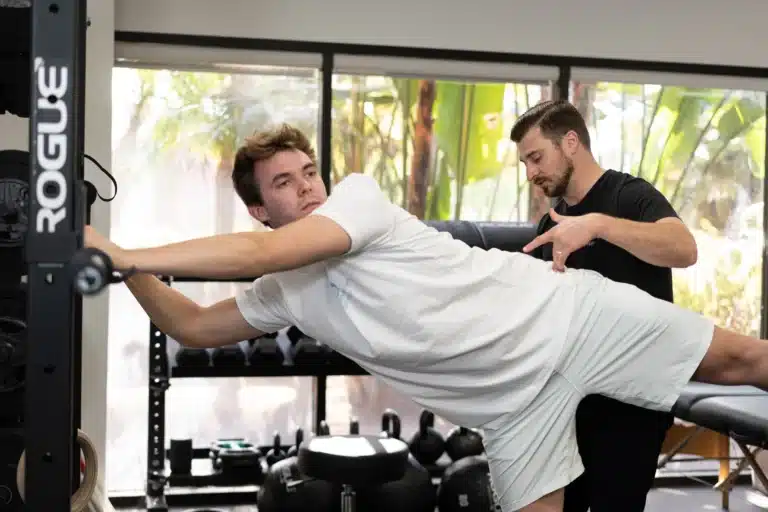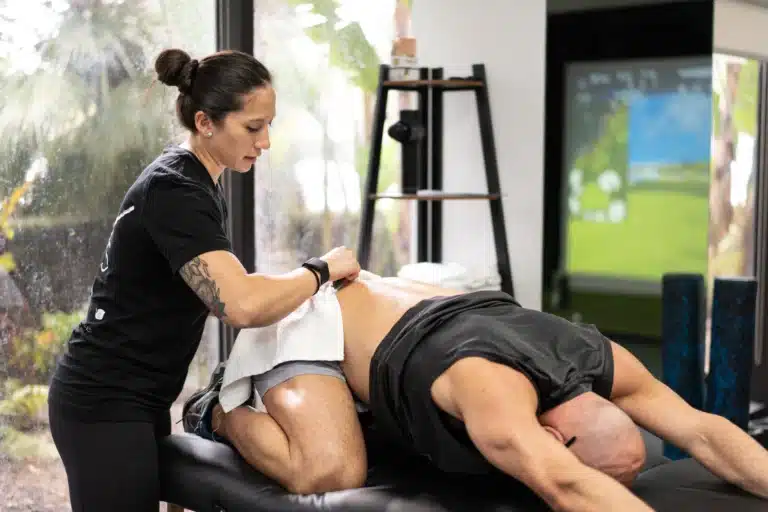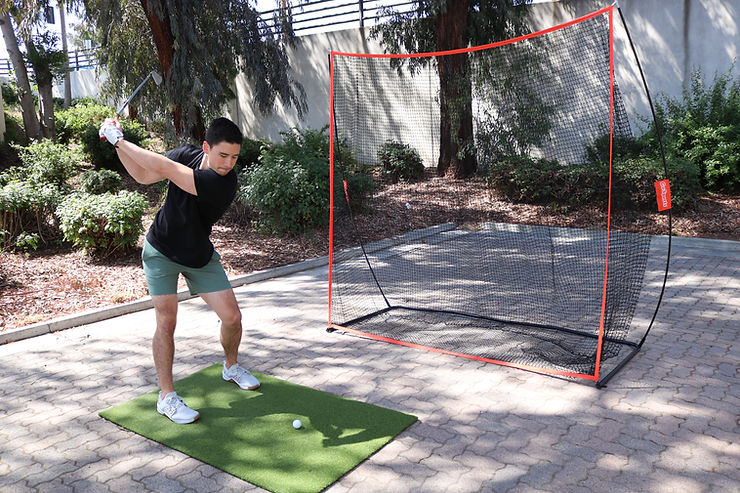Physical therapy and sports medicine are two crucial healthcare disciplines in health and wellness, particularly for those recovering from injuries, dealing with running pain, or seeking to enhance their physical performance. While they share similarities, understanding their differences is essential for effective treatment plans and recovery. This blog will explore the distinctions between physical therapy and sports medicine specialists, helping you make informed decisions about your healthcare needs.
Physical Therapy vs Sports Medicine
Physical therapy focuses on rehabilitation and improving range of motion for individuals recovering from injuries or surgeries, while sports medicine is a branch of medical care specifically aimed at preventing, diagnosing, and treating sports injuries and conditions. Both fields emphasize enhancing physical health and promoting overall health but cater to different populations and goals.
What is Physical Therapy?
Physical therapy (PT)is a healthcare profession focused on diagnosing and treating individuals who have medical problems or musculoskeletal conditions that limit their abilities to move and perform functional activities in their daily lives.
At The Movement Schopp, physical therapists use various techniques, including exercises, manual therapy techniques, and modalities like heat, cold therapy, and electrical stimulation, to help patients regain strength, flexibility, and mobility.
Common Injuries Treated
Physical therapists frequently treat various injuries, including sprains, strains, post-surgical rehabilitation, and back pain. Their goal is to restore function and improve quality of life through prescribed exercises, therapeutic exercise programs, and targeted interventions.
Physical therapists often address various injuries and conditions, including chronic injuries such as sprains, strains, and fractures. They also specialize in post-surgical rehabilitation, assisting patients in their recovery from procedures like joint replacement surgery or rotator cuff repair. Additionally, physical therapists work with individuals suffering from chronic conditions, including arthritis, back pain, and repetitive strain injuries, as well as neurological disorders such as stroke, multiple sclerosis, and Parkinson’s disease.
What is Sports Medicine?

Sports medicine is a branch of medicine that deals with physical activity and the treatment and prevention of injuries related to sports and exercise. Sports medicine doctors are specialized in diagnosing and treating common sports injuries and conditions. They work with athletes of all levels to help them improve their performance and recover from injuries.
Common Injuries Treated
Sports injury specialists typically address a range of injuries and conditions, including acute injuries such as fractures, dislocations, and ligament tears, as well as repetitive motion-type injuries like tendinitis, stress fractures, and shin splints. In the United States alone, approximately 8.6 million sports-related injuries are reported each year. They also specialize in managing and recovering concussions, ensuring that athletes safely return to their activities. Additionally, these professionals guide performance enhancement by offering nutritional advice and tailored exercise prescriptions to optimize athletic capabilities.
Common Reasons Why You Might Need Physical Therapy or Sports Medicine
You might need physical therapy if you are recovering from surgery, managing a chronic pain condition, or dealing with an injury that affects your ability to perform daily activities. 79% of physical therapy patients report significantly reduced pain after treatment. Physical therapy treatments can help you regain strength, improve mobility, and relieve pain.
On the other hand, you might seek sports medicine if you are an athlete dealing with an injury, looking to prevent injuries, or seeking to enhance your performance levels. Sports medicine professionals can provide specialized care tailored to the needs of athletes, including injury prevention strategies and performance improvement techniques.
Key Differences Between Physical Therapy and Sports Medicine
Physical therapy primarily focuses on rehabilitation and recovery for patients with various conditions, while sports medicine specializes in preventing, diagnosing, and treating injuries specifically related to sports and athletic performance. This leads to the question: is sports medicine the same as physical therapy? While they have some overlapping goals, they are distinct fields. Additionally, physical therapists often work with a broader patient demographic, including individuals with chronic conditions, whereas sports medicine practitioners mainly cater to athletes at various levels.
Educational Background and Training
Physical therapists typically hold a Doctor of Physical Therapy (DPT) degree and must pass a licensure exam to practice. Their education focuses on anatomy, physiology, biomechanics, and therapeutic techniques.
On the other hand, sports medicine physicians are medical doctors who have completed medical school, followed by a residency in a related field such as family medicine, internal medicine, or orthopedics, and additional fellowship training in sports medicine. They are board-certified and have extensive training in diagnosing and treating sports-related injuries.
Scope of Practice
Physical therapists primarily focus on rehabilitation and helping patients regain function after an injury or surgery. They work in various settings, including hospitals, clinics, and private practices.
Sports medicine physicians vs physical therapists have a broader practice scope, including injury prevention, diagnosis, treatment, and performance enhancement. They often work with athletes and active individuals, providing comprehensive care that addresses immediate injuries and long-term health and performance goals.
Goals
The primary goal of physical therapy is to help patients recover from injuries, manage pain, and improve their overall bodily function. Physical therapists aim to restore mobility, strength, and flexibility, enabling patients to return to daily activities.
In contrast, sports medicine aims to treat injuries, enhance athletic performance, and prevent future injuries. Sports medicine physicians work with athletes to optimize their physical condition, improve performance, and ensure long-term health and well-being.
Treatment Approaches
Physical therapists employ a range of treatment methods, such as exercise therapy, which encompasses strengthening, stretching, and aerobic exercises to enhance physical capacity; manual therapy, involving hands-on techniques to facilitate the movement of joints and soft tissues; and various modalities like heat, cold, ultrasound, and electrical stimulation aimed at alleviating pain and minimizing inflammation.
Sports medicine physicians may utilize similar treatment methods as physical therapists but also incorporate medical interventions such as prescribing medications, administering injections, and recommending surgical procedures when required. Additionally, their focus extends to performance enhancement, developing tailored training programs, offering nutritional advice, and employing advanced techniques like biomechanical analysis to optimize athletic performance.
How to Decide Between Physical Therapy and Sports Medicine

Deciding between physical therapy and sports medicine depends on your needs and goals. If you are recovering from surgery, managing a chronic condition, or dealing with an injury that affects your daily activities, physical therapy may be the best option. Physical therapists can help you regain function, reduce pain, and improve your quality of life.
Sports medicine may be more appropriate for athletes or active individuals looking to prevent injuries, enhance performance, or recover from a sports-related injury. Sports medicine physicians can provide specialized care tailored to your needs, helping you achieve your athletic goals and maintain long-term health.
Conclusion
Understanding the difference between sports medicine and physical therapy is crucial for making informed decisions about your health care. Both fields offer valuable services to help you recover from injuries, manage pain, and improve your physical function. By choosing the right type of care, you can achieve your health and wellness goals more effectively.
FAQs
Is PT the same as sports medicine?
No, physical therapy and sports medicine are not the same. Physical therapy focuses on rehabilitation and helping patients regain function after an injury or surgery, while sports medicine encompasses a broader range of services, including injury prevention, diagnosis, treatment, and performance enhancement for athletes.
Why are physical therapists important in sports?
Physical therapists play a crucial role in sports by helping athletes recover from injuries, manage pain, and improve their physical function. They use various techniques to restore mobility, strength, and flexibility, enabling athletes to return to their sport safely and effectively.
What is physical therapy also known as?
Physical therapy is also known as physiotherapy. Both terms refer to the same profession, which uses exercises, manual therapy, and other techniques to help patients recover from injuries and improve their physical function.




